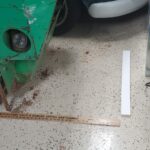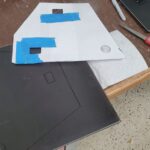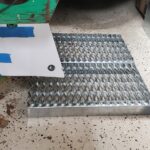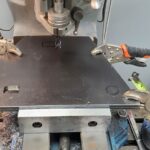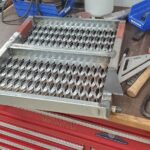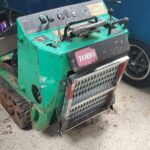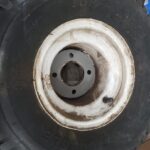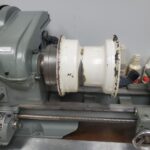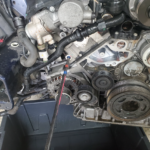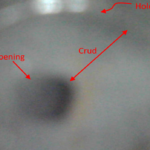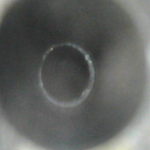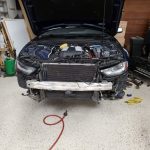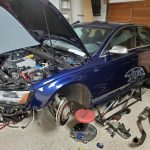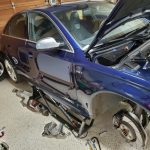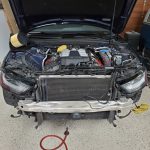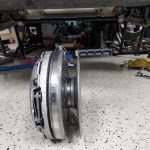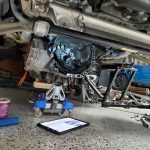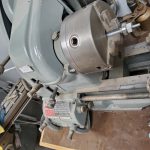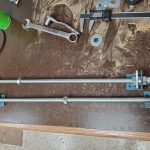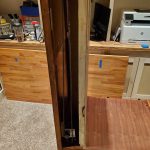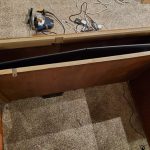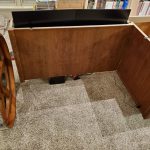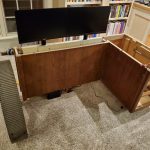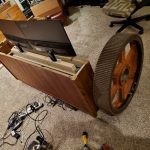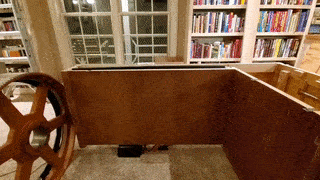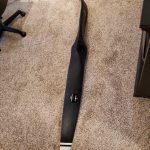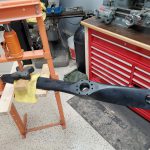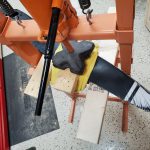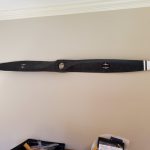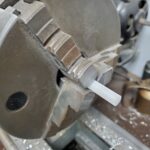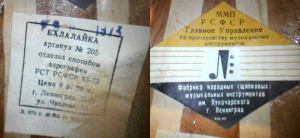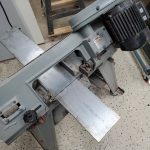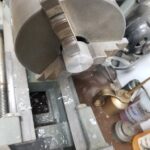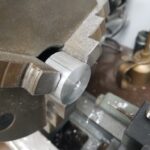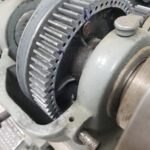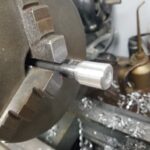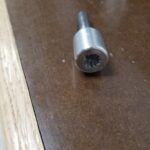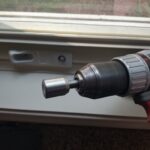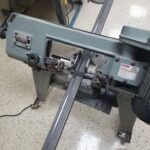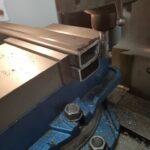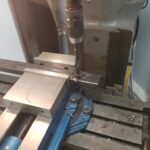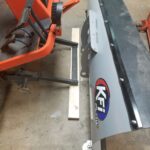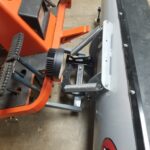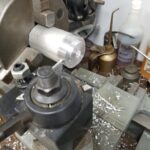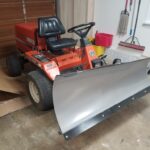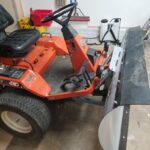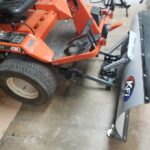S4 Clutch Replacement
The clutch on my car finally started slipping when under full power. This wasn’t completely unexpected since it originally came from a high-traffic area of NJ. I was able to get it replaced over the past two weekends plus a couple of weeknights. There wasn’t anything particularly difficult about this and it’s well documented online, just lots of small challenges in a row with figuring out how to access various fasteners.
While I was at it I took the opportunity to replace belts, plugs, change the supercharger oil, etc.
Custom Desk – Monitor Lift Mechanism
I got the idea for the monitor lift from an example online using all-thread as lead screws to drive a platform. Essentially I’m just replicating this idea but with a few tweaks that take advantage of having the lathe to make it better/stronger, easier to build, and to take advantage of spare parts I already had.
First I cut the all-thread rod to length and then I turned down one end of each to fit the inside diameter of some spare bearings. I left an extra bit on the end and turned it down to fit the inside diameter of a timing belt drive sprocket – this was later replaced with a chain sprocket due to slipping. I repeated the same on the top side of each rod (without the extra bit for the drive sprocket) and then I cut some metal brackets to hold the outer bearings. I then cut a small platform and attached two nuts to it that would connect it to the threaded rods.
These parts were all assembled into the desk; a few small shims were needed to get the rods exactly parallel. I then connected the threaded rods together with a small #25 chain drive. To power the lift I tried a few different test motors and eventually settled on the guts from a small/cheap electric screwdriver – this provided enough torque while not requiring a huge power supply. It could be a bit faster and I need to add some sound damping, but it’s working very well for an initial attempt.
I also made some mounting plates to adapt the monitors to a fixed mounting since the regular bases were too wide. The monitors were then mounted to a 2×4 that acts as a spacer and also adds strength to the platform. Once the tabletop is in place the 2×4 and the rest of the mechanism will not be visible since the monitors will rise so that their bases are just flush with the top – I’ll likely add a trim piece to block this off. The monitors also drop low enough that the table top will clear with no problems.
The last step was adding limit switches and rewiring – moving the toggle switch up runs the lift up until the positive switch is tripped, and moving the switch down runs the lift down until the lower limit switch is tripped.
Next up will be making the tabletop…
Prop Straightening
Continuing with the home office/study/library build, I found some decoration via a damaged airplane propeller. I was able to straighten it out using the press and some 2×4 blocking. The aluminum is springy so the key to getting it flat is to bend a bit past flat, just enough so that when it springs back it’s straight.
There was a possibility that the amount of bending needed would create cracks. Based on prior experience with aluminum, I would expect for the paint to flake and for the surface underneath to turn white just before cracks occurred and I was looking out for this. If cracking had started, the plan was to heat the area with a torch until it was annealed, then continue bending – this would also have required repainting, so I’m glad it wasn’t needed.
For mounting it to the wall I cut a circle of 3/4″ plywood on the bandsaw. The circle is just small enough to fit into the prop hub, but too big to go through the smaller hole of the inner hub. Long cabinet screws then secure the plywood to a stud, sandwiching the prop in place. I plan to make another circle, paint black, and fit it into the hub to cover the structural piece.
Balalaika Repair
It had been in storage and a few parts were missing that needed to be replaced:
– End Pins – 1 of the 3 end pins remained and I used it as a reference for turning 2 more matching pins on the lathe from a plastic rod.
– Bridge – The bridge was missing but I found dimensions that seemed to match the shadow that had been left by the original bridge; I used these dimensions and some reference photos online to make a replacement out of a scrap of maple. This was very quick work with the belt sander.
– Strings – This was the easiest part, available online.
With the parts replaced we were able to tune it and it seems to play OK…
With an endoscope camera I was able to find two labels inside:
Left Translation: Balalaika. Article #205. Airbrush method finish. Nationwide Standard of Russian Soviet Federative Socialist Republic 83-72. Price 6 rubles 70 kopeks. Leningrad, 15 Chapaev St.
Right Translation: Ministry of Local Industry of Russian Soviet Federative Socialist Republic
Main Directorate of Production of Musical Instruments
Lunacharsky Factory of Folk (plucked string) musical instruments
Leningrad
The left label is also stamped with a 1973 date
Window Crank Adapter
It’s not particularly hard to use a window crank, but multiplied by several windows it does take a little bit more time than it could. With this in mind I created an adapter for a cordless drill to more quickly open/close windows, particularly as it’s starting to cool down some and we’re using the windows more.
Construction was relatively straight forward, it’s just a bit of aluminum turned to size and with a hole drilled with the same size as the OD of the splines on the window crank mechanism. The only tricky part was creating the splines since this is the first time I’ve attempted it. The lathe has a built-in index plate that allowed the adapter to be positioned in the 12 evenly divided positions required; once it was in each position I used a small lathe tool to broach a slot, moving the carriage back and forth with the lathe off while slowly raising the tool. I then turned a bit of steel rod to size and pressed it into the back of the adapter.
Overall it turned out OK – the splines aren’t the greatest due to the tool not being very rigid, but it’s plenty good enough for it to engage with the window and hold solidly.


